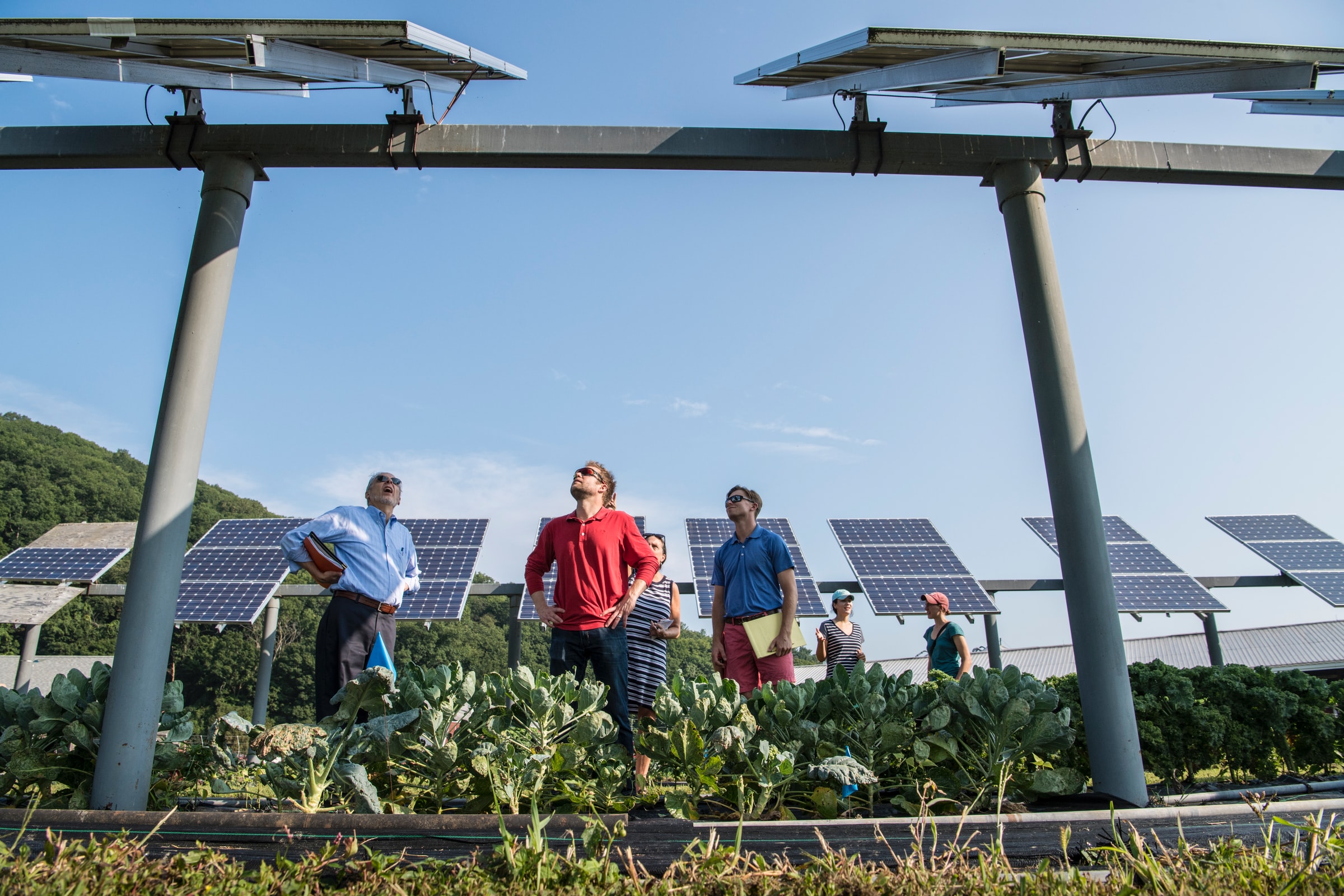Community solar is a rapidly growing part of the solar sector, removing barriers to entry for consumers while still offering the savings and benefits associated with a rooftop solar installation. Furthermore, the deployment of community solar projects will help states across the country to meet their clean energy targets in the coming years. But what is community solar? How does it work? Is it right for you? We’ve answered all of these questions and more in our beginner’s guide to community solar below.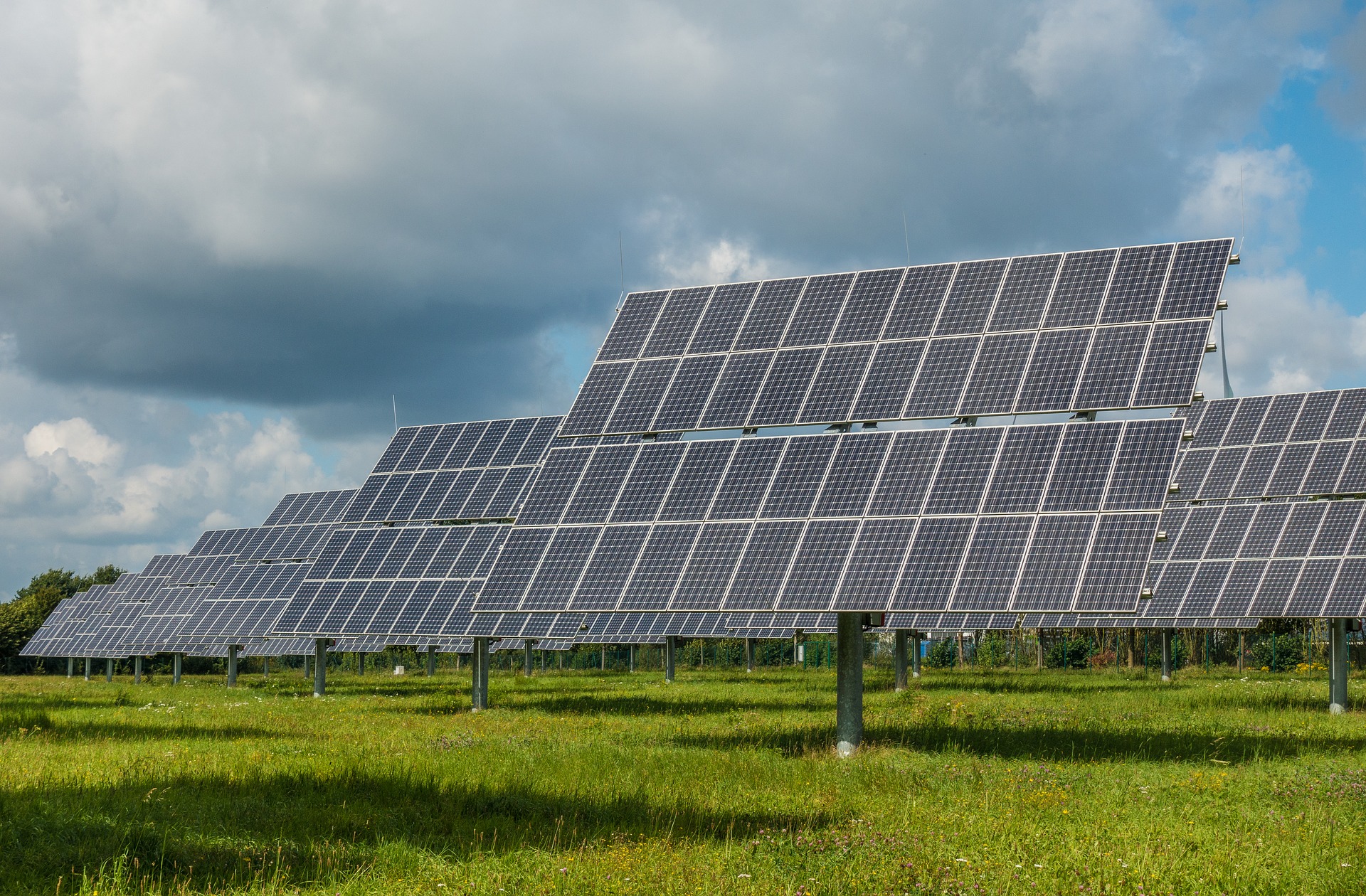
What is Community Solar?
Community solar, sometimes known as shared solar, is a distributed solar energy model wherein customers can lease part of a larger, offsite, shared solar PV system and receive benefits for their participation. Community solar projects are open to multiple subscribers, all of whom receive bill credits proportional to their share of the overall energy generation of the shared solar PV system.
The National Community Solar Partnership offers the following definition of the term ‘community solar’:
“We broadly define community solar to include any solar project or purchasing program, within a geographic area, in which the benefits flow to multiple participants (individuals, businesses, nonprofits, etc.).”
How Does Community Solar Work?
Community solar subscribers receive bill credits for their participation. Customers subscribe to a portion of the offsite solar PV system—removing the need to install panels on their own property—and receive bill credits in proportion to the size of their subscription. These community solar gardens are generally constructed somewhere in the locality and open to subscribers from the nearby community.
Community Solar Models
‘Community Solar 101’, an in-depth report from the National Renewable Energy Laboratory, outlines three common business models used in the design and structure of community solar projects. Community solar projects may be owned by utility companies or third-party developers, and they can be located anywhere from public buildings to private land to brownfields. Below we have explored some of the most common program design structures.
Utility-Sponsored/Third-Party Developer Model
The utility-sponsored model, wherein the utility company owns & operates the community solar project with voluntary participation offered to customers, is the most common structure in the community solar sector right now. In those states which allow third-party solar power purchase agreements (PPAs) a third-party developer may own & operate the community solar PV array. In this scenario, customers can sign up either through an upfront payment or a monthly payment. Those customers continue to buy electricity from their utility as normal, but will receive a bill credit proportional to their subscribed share of the project’s power generation, offsetting their utility bill. 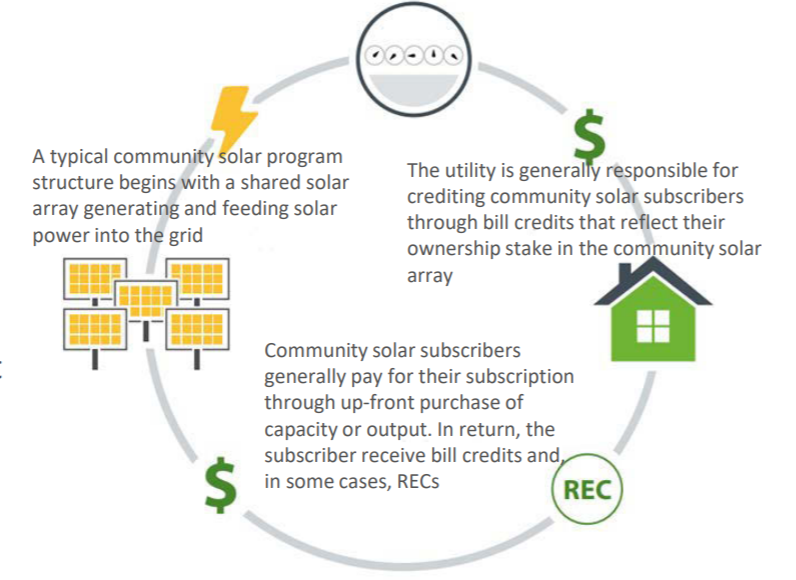
Special Purpose Entity Model
Individuals form a business enterprise in order to develop a community solar project. This allows the business entity in question to take advantage of available state and federal tax incentives.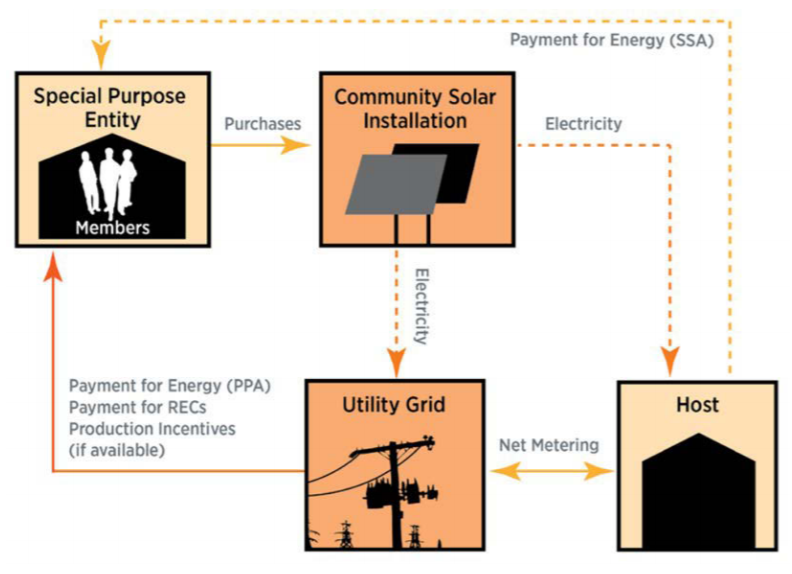
Nonprofit Donation-Based Model
A nonprofit organization administers a community solar project for the benefit of its members or donors. 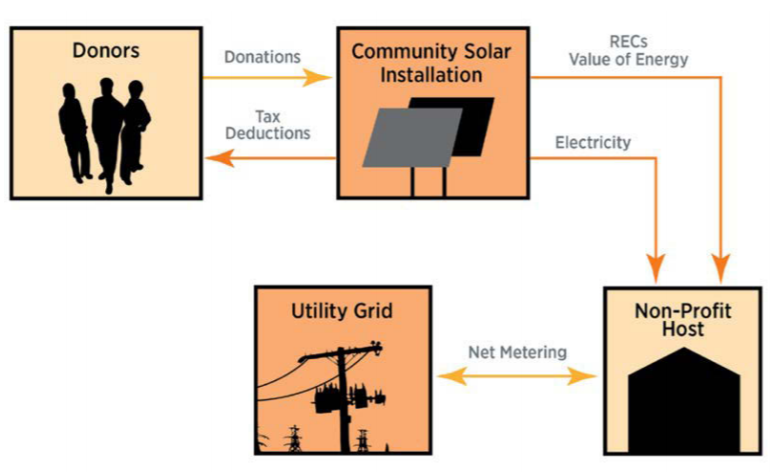
What are the Benefits of Community Solar?
A community solar subscription comes with many of the typical benefits of a rooftop solar installation, as well as a few additional benefits unique to the community solar model.
- No Installation Necessary: It is not necessary to install panels on your property to participate in a community solar program, removing barriers to entry for those energy consumers unable to install solar panels for any reason.
- Utility Bill Savings: A community solar subscription offers savings to customers via utility bill credits, as well as greater electricity rate stability.
- Equitable Solar Access: The removal of common barriers to entry for prospective solar customers opens up the solar sector to a much wider range of consumers, offering savings & benefits in a more equitable manner. In some cases, a portion of the project may be set aside for low-and moderate-income (LMI) energy customers.
- Reduced Carbon Footprint: More widespread deployment of community solar projects will reduce our overall carbon footprint and lower greenhouse gas (GHG) emissions. Signing up for a community solar project is a tangible way to benefit the environment.
- Boost Local Community: The development of a community solar garden can offer economic benefits to the local community, including the creation of jobs and a reduction in overall energy costs.
- Grid Benefits: Community solar projects may be sited in specific locations to enhance grid performance and reduce the overall strain on the energy grid, lessening ‘wear and tear’ and reducing the chances of maintenance costs being passed down to consumers via higher utility rates.
Who is Community Solar for?
The community solar model offers a viable alternative to rooftop solar PV systems in many different scenarios. Examples of energy consumers who could benefit from a community solar subscription include:
- Those who cannot install solar panels on their property for a number of reasons, such as inadequate roof space, excessive shading, or other factors.
- Those who are renting and do not own the property.
- Those who cannot install solar panels for financial or other reasons, or simply do not wish to install solar panels on their property.
What to Ask Before Signing Up
Below we have outlined a number of common questions subscribers may have when considering a community solar subscription. Of course, the answers to these questions will vary on a project-by-project basis, and the answers noted below are only relevant to YSG community solar projects such as the Pitkin Project. If you are dealing with another developer, you may use the following questions to determine whether or not the project is right for you.
Q: What if I move house?
A: As long as you move within the same utility zone, you may remain subscribed to the same community solar project.
Q: Can I unsubscribe if I change my mind?
A: Yes, you may terminate the subscription agreement at any time, provided you give YSG at least 60 days notice. Subscribers will be responsible for a prorated portion of the monthly subscription fee, in respect of the month in which the termination becomes effective.
Q: Will I save money?
A: Yes, you will save on your energy costs. Savings associated with community solar vary on a project-by-project basis, but you can expect a significant reduction on your utility bill each month.
Q: Do I need to install anything at my property?
A: No, there is no onsite installation required with community solar. This is a big part of the appeal with community solar—you receive the benefits associated with solar energy, with no alterations to your property or interference in your daily life.
These are just some of the most popular queries surrounding community solar. For a full list of questions & answers covering all of the key issues, please consult our Community Solar FAQ at this link. For a clearer picture of how the community solar model works, see the graphic below which highlights the different potential pathways to community solar for subscribers.
The Status of Community Solar in the United States
The details below, courtesy of the National Renewable Energy Laboratory, are accurate as of June 2020.
- Community solar can be found in 39 states nationwide, as well as Washington D.C.
- Of those states, 20 (as well as Washington D.C.) have policies to support community solar. (See graphic below)
- Community solar programs across the United States vary in scope, but generally allow for some form of virtual net metering, ensuring benefit for subscribers.
- 2,625 megawatts alternating-current (MW-AC) of total installed solar capacity is community solar.
- 74% of the total community solar market is concentrated in the four highest-performing states:
- Minnesota (663 MW-AC)
- Florida (593 MW-AC)
- Massachusetts (436 MW-AC)
- New York (243 MW-AC)
Exact figures may have changed since June 2020 but these statistics give a sense of community solar’s growing presence in the United States solar market.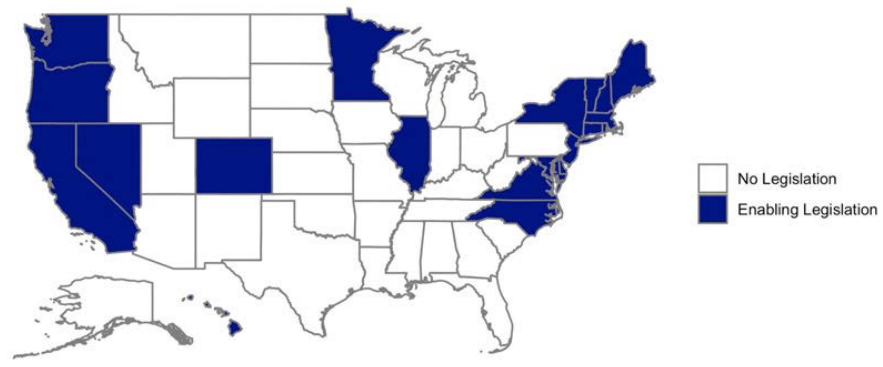
Much of the information used throughout this article, as well as the graphics, comes from the report ‘Community Solar 101’ from the National Renewable Energy Laboratory (NREL). You can download the full report here.
The Pitkin Project: New York Community Solar
The Pitkin Project is a New York City community solar garden from YSG Solar. Located in East Brooklyn, the Pitkin Project is now open to residential subscribers from all five NYC boroughs. If you’re a residential energy consumer living in Manhattan, Brooklyn, Queens, the Bronx, or Staten Island you are eligible to sign up and save on your utility bill. To learn more about the Pitkin Project give us a call at 212.389.9215 or send an email. You can even sign up quickly and easily via the EnergySage Community Solar Marketplace—just follow this link to learn more.
Check out our short video below to see what the Pitkin Project is all about.
Sign up for Community Solar
Are you interested in community solar? Reach out to YSG Solar today. YSG will identify the ideal community solar subscription for your needs and walk you through the entire sign-up process from start to finish—ensuring the biggest possible savings on your utility bills. To get in touch, send us an email or call at 212.389.9215.
YSG Solar is a project development vehicle responsible for commoditizing energy infrastructure projects. We work with long-term owners and operators to provide clean energy assets with stable, predictable cash flows. YSG's market focus is distributed generation and utility-scale projects located within North America.
Sources:
Information and images used throughout this article are courtesy of the National Renewable Energy Laboratory (NREL), specifically their report entitled ‘Community Solar 101’, available here.
https://www.nrel.gov/state-local-tribal/community-solar.html
https://www.energy.gov/eere/solar/national-community-solar-partnership
Featured Photo by Science in HD on Unsplash.

